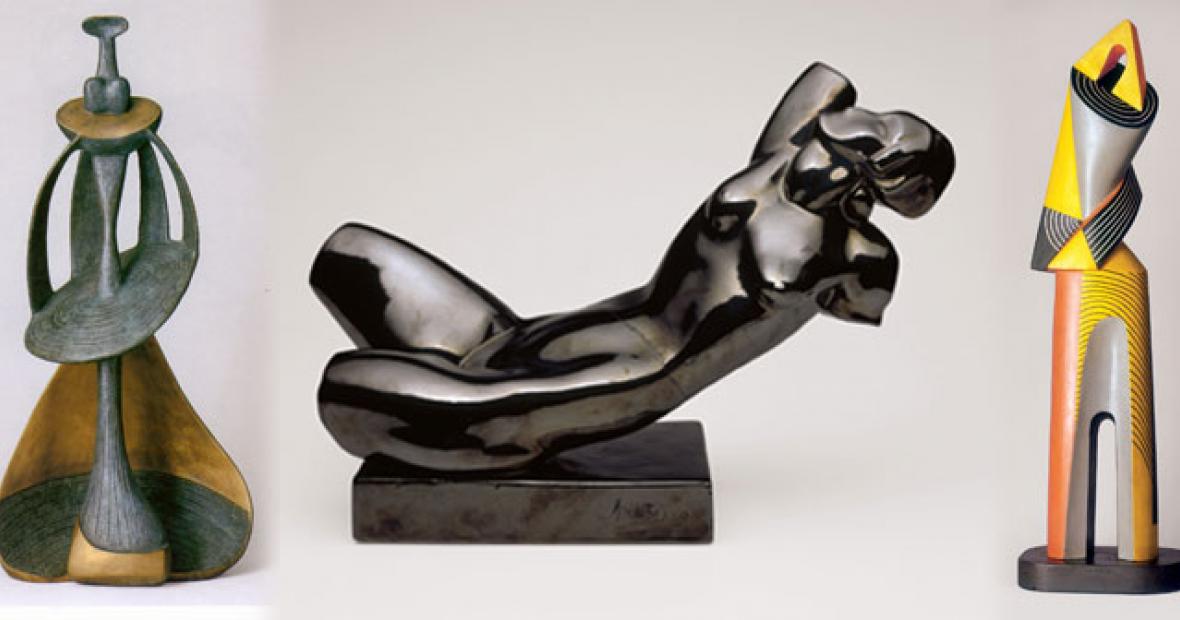Creator of the scoulpto-peinture genre: who is Alexander Archipenko?
He applied the elements of cubist painting in sculpture. His grandfather was an icon painter.

(1887-1964) Russian-born American sculptor. He was born in Kyiv, Ukraine. He died in New York, USA. His father was an engineering professor at Kyiv University, and his grandfather was an icon painter. He entered the Kyiv Academy of Arts in 1902 and attended first painting and then sculpture classes. He was expelled from the school in 1905 for criticizing his teachers. He went to Moscow and participated in various collective exhibitions with his works.
Alexander Archipenko went to Paris in 1908 and entered the Ecole des Beaux-Arts. However, he did not want to comply with the school discipline and was more fond of visiting museums and examining works of art from the past, so he left after a few weeks. In 1910, he made friends with Fernand Leger, met Picasso and Braque, and under their influence, he turned to the Cubist understanding of art. He exhibited his first works in this direction in galleries such as Salon des Independants and Salon d'Automne. He opened an exhibition in the USA in 1913 and in Germany in 1914. In the years following World War I, he visited various European cities and organized exhibitions and participated in the Venice Biennale in 1920. He moved to Germany in 1921, opened a private sculpture school in Berlin, and continued his exhibitions in various cities.
Leaving Berlin in 1923, Archipenko settled in the United States and became a naturalized citizen in 1928. Between 1935-1950 he taught at the universities of Washington, Kansas, and Chicago. He opened a private sculpture school, first in Chicago and later in New York. He was elected a Fellow of the US National Institute of Arts and Letters in 1962.
An Impressionist atmosphere is felt in Archipenko's sculptures such as Suzanne, Sitting Woman, and Sitting Figure, which he made in his early years in Paris. After 1909, it is observed that he gave works in line with Cubist art. In his sculptures of this period, he became interested in the contrast between concave and convex forms, volumes, and pits.
Archipenko has been a pioneer of polychrome in sculpture. Like all other Cubists, he opposed traditional material. For example, in his sculpture series named Medrano, which reflects the circus world, he used different materials such as wood, glass, metal, and mirrors, and painted the forms with bright colors. This experiment led him to a multicolored relief sculpture painting, which he called Sculpto-peinture. His multicolored bronze works such as Woman with a Fan, Espanola, Vase on the Table, and Still Life with a Book are similar to still lifes in Cubist paintings.
Archipenko also tried to introduce movement into the picture. In his works of this kind, which he started in 1924 and named Archipentura, he divided the painting surface into transverse parts and made these parts move through a hidden engine. After 1946, he worked to introduce the element of light into the sculpture and illuminated his works created with plexiglass material with the light sources he placed inside.
Archipenko produced his best works between 1910 and 1920. The sculptures he made in later periods can be considered variations of the forms he created in this phase. His sculptures, which are the product of the last twenty years of his artistic life, have a more decorative effect. In these, especially the use of color is superficial and superficial, and there is no innovation in terms of concept and content.
Archipenko, who created a new style by organizing the formation of matter and space in the expression of the human figure, made significant contributions to the development of contemporary sculpture in Europe and America.
---------------------------
Alexander Archipenko
Life and Work
https://www.archipenko.org/life-and-work.html
